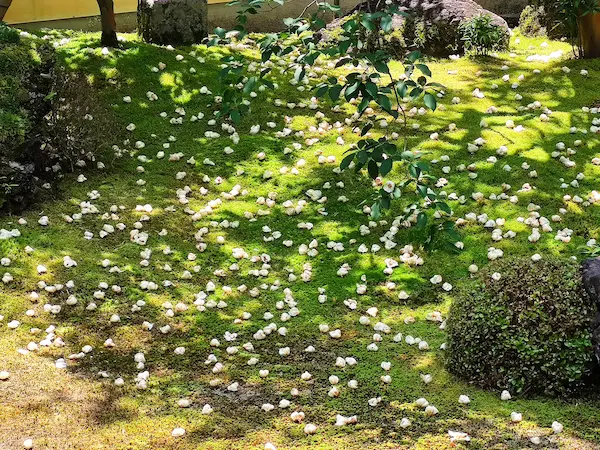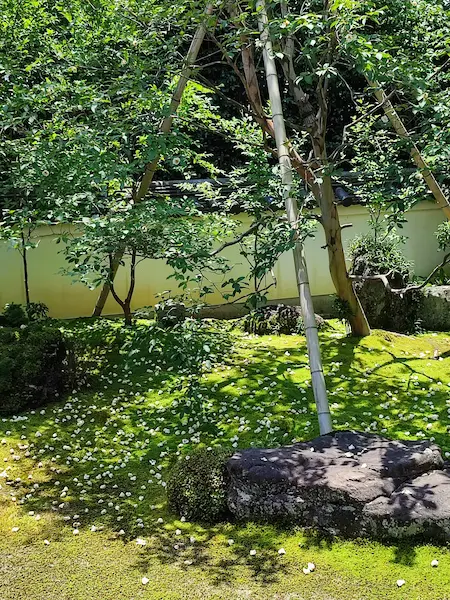You can enjoy Shojin Ryori (zen vegetarian meals) in Torin-in Temple.
Torin-in Temple is one of the sub-temples of Myoshinji Temple and is located on the east side of the temple grounds. The temple is usually closed to the public, but you can visit there during some seasonal festivals and on lunch events.
The main deity of the temple is Kannon Bosatsu (Goddess of Mercy), built in 1531 by Ujitsuna Hosokawa (a powerful Daimyo at the end of Muromachi period) to mourn the loss of his father. It was rebuilt by Toyokuni Yamana during the Warring States Period (late 16th century).
Known as a temple of sarasouju (sal tree), there are more than a dozen sarasouju trees in the garden in front of the temple’s main hall. The sal tree is one of the sacred trees of Buddhism, said to have grown in the place where the Buddha died.
When the flowers are in full bloom, they fall on the green moss and give the temple a charming atmosphere.
However, since the real sal trees in India (Shorea robusta) do not grow in Japan. Japanese temples use Japanese stewartia trees (natsu-tsubaki; Stewartia pseudocamellia) as sarasouju trees as a substitute.



Shojin Ryori in Torin-in
Every Saturday and Sunday, the temple offers Buddhist vegetarian lunch (shojin ryori), prepared by the temple’s abbot. On Tuesdays and Fridays, you can join in a vegetarian cooking class.


Shukubo (lodging facilities) are also available at Torin-in. You can stay overnight and enjoy vegetarian cuisine while experiencing the Zen temple.
Nearby spots
You can also visit main temple of Myoshinji and some of its sub-temples. Taizo-in and Keishun-in are always open for public.
Houkongo-in temple, which is famous for seasonal flowers, is not far.
Related articles:
[…] tea houses, or historical structures that are worth exploring. They are Taizo-in, Keishun-in, Torin-in and […]